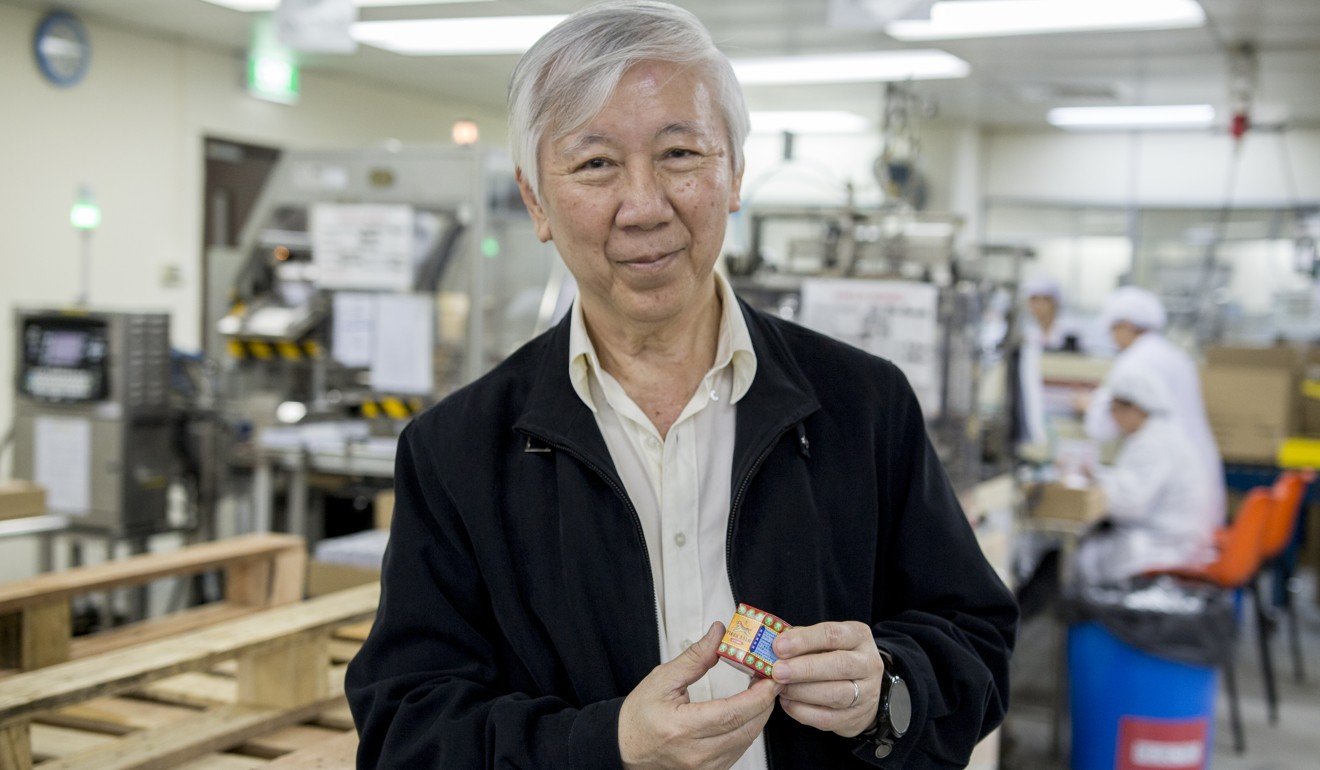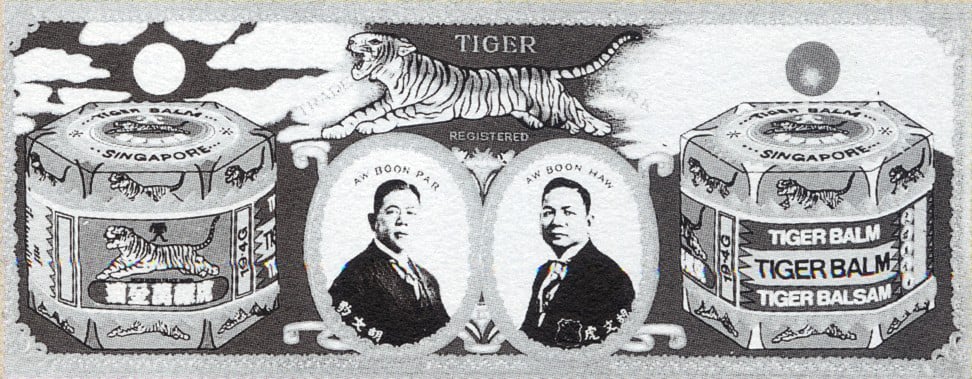The Tiger Balm story: how ointment for every ailment was created, fell out of favour, then found new generation of users
Analgesic balm in a hexagonal jar, launched in Rangoon by the Aw brothers in 1924, was a staple of Chinese families’ medicine cabinets for a generation. Today, Tiger Balm products have fans around the world, including Lady Gaga
PUBLISHED : Saturday, 17 February, 2018, 8:31am
UPDATED : Wednesday, 21 March, 2018, 12:25pm
Christopher DeWolf

You get a strong whiff of it before you see it. Approaching the nondescript factory block in a suburban estate on the edge of Singapore, you are hit by the invigorating aroma of menthol and camphor. Your sinuses clear, your eyes tingle.
“Nobody who works here has to worry about getting sick,” Han Ah Kuan jokes as he stands outside the entrance to the factory.
Han is executive director of the Haw Par Corporation, the company responsible for that powerful aroma. He has tousled white hair, an easy-going demeanour, and little hexagonal jars of Tiger Balm in his home, office and car. For nearly a century, people around Asia and ****her afield have been using his company’s product to relieve muscle aches, cold symptoms, headaches and more.
Former Hong Kong resident Andrea Tam remembers how her grandmother kept a tiny red tin of the balm in one of her undershirt pockets. “She literally used it for everything – any type of cuts and aches,” she says.
British-born journalist Vicky Wong has a similar story. “[It] reminds me of my nan,” she says. “No matter what the ailment – sore throat, cold, nosebleeds, mosquito bites – she would just put Tiger Balm on you.”
Han has refused to let Tiger Balm recede into the shadows of nostalgia since he joined the company more than 25 years ago. He wants it to be seen as indispensable by everyone from athletes to Snapchatting teenagers.
“Today, I would say our consumer demographic ranges [across] all ages and classes, male and female,” he says. “That means we’re able to produce products for different users in different generations.”

Han Ah Kuan, executive director of the Haw Par Corporation, inside the Tiger Balm factory in Singapore. Photo: Christopher DeWolf
The Tiger Balm story begins several generations ago in rural Fujian province, in southern China. That’s where, in the late 1860s, Aw Chu Kin, the son of a herbalist, set off to join his uncle in the Burmese city of Rangoon.
[It] reminds me of my nan. No matter what the ailment – sore throat, cold, nosebleeds, mosquito bites – she would just put Tiger Balm on you.VICKY WONG
It was a long journey that took him through Singapore and Penang, in Malaya, where he earned more in a day selling herbal remedies to dock workers than he did in a month back home.
By 1870, Aw had made it to Rangoon. He set up an apothecary named Eng Aun Tong (the Hall of Eternal Peace) and had three sons: Aw Boon Leong (“Gentle Dragon”), Aw Boon Haw (“Gentle Tiger”) and Aw Boon Par (“Gentle Leopard”).
Boon Leong died young, and father Aw died in 1908, leaving the family business to Boon Par and Boon Haw. Together, they delved into their father’s recipes and adapted them to produce an analgesic balm to treat any manner of ills. When it launched in 1924, Boon Haw named it after himself: Tiger Balm.

A vintage Tiger Balm advert showing the Aw brothers. Photo: Haw Par Corp
The product spread quickly through the world’s Chinese communities. While Boon Par focused on managing the business, Boon Haw aimed to gain influence. He donated money to charities and schools, and founded a string of newspapers in Singapore, Malaya and Hong Kong, including Sing Tao Daily and the Hong Kong Tiger Standard – which is today known simply as The Standard.
He also built mansions in Singapore, Hong Kong and Fujian, with adjoining theme parks known as Tiger Balm Gardens. Their pathways were lined by bizarre and morbid concrete statues in scenes from Chinese mythology.
The Hong Kong park was torn down in 2004 after it was sold to Li Ka-shing’s Cheung Kong Holdings by Boon Haw’s adopted daughter, Sally Aw Sian. The Singapore park was donated to the city’s government, which maintains it as a historic site.

An old picture of the Eng Aun Tong headquarters in Singapore. Photo: Haw Par Corporation
The Tiger Balm business endured a period of struggle after the Aw brothers died; Boon Par in 1944 and Boon Haw in 1954. Not long after it went public on the Singapore stock exchange in 1969, the company was taken over by British conglomerate Slater Walker, which soon afterwards collapsed in a banking crisis.
After a period of uncertainty, Singaporean banker Dr Wee Cho Yaw gained control of Haw Par in 1981 and began rebuilding the company. In 1992, Haw Par took back Tiger Balm, which had been franchised out for 20 years during the Slater Walker period. By that time, the tiger was a shadow of its former self.
“When we took it back, the product had lost almost a generation of users,” says Han. He joined the company in 1992 after being headhunted from Vicks VapoRub, one of Tiger Balm’s direct competitors.
Born in Malaysia, Han grew up in Singapore and, like most people in the city state, he was familiar with Tiger Balm from his youth. But from a professional perspective, he saw how the brand was struggling.








 Reply With Quote
Reply With Quote